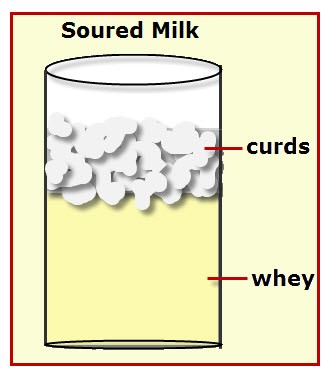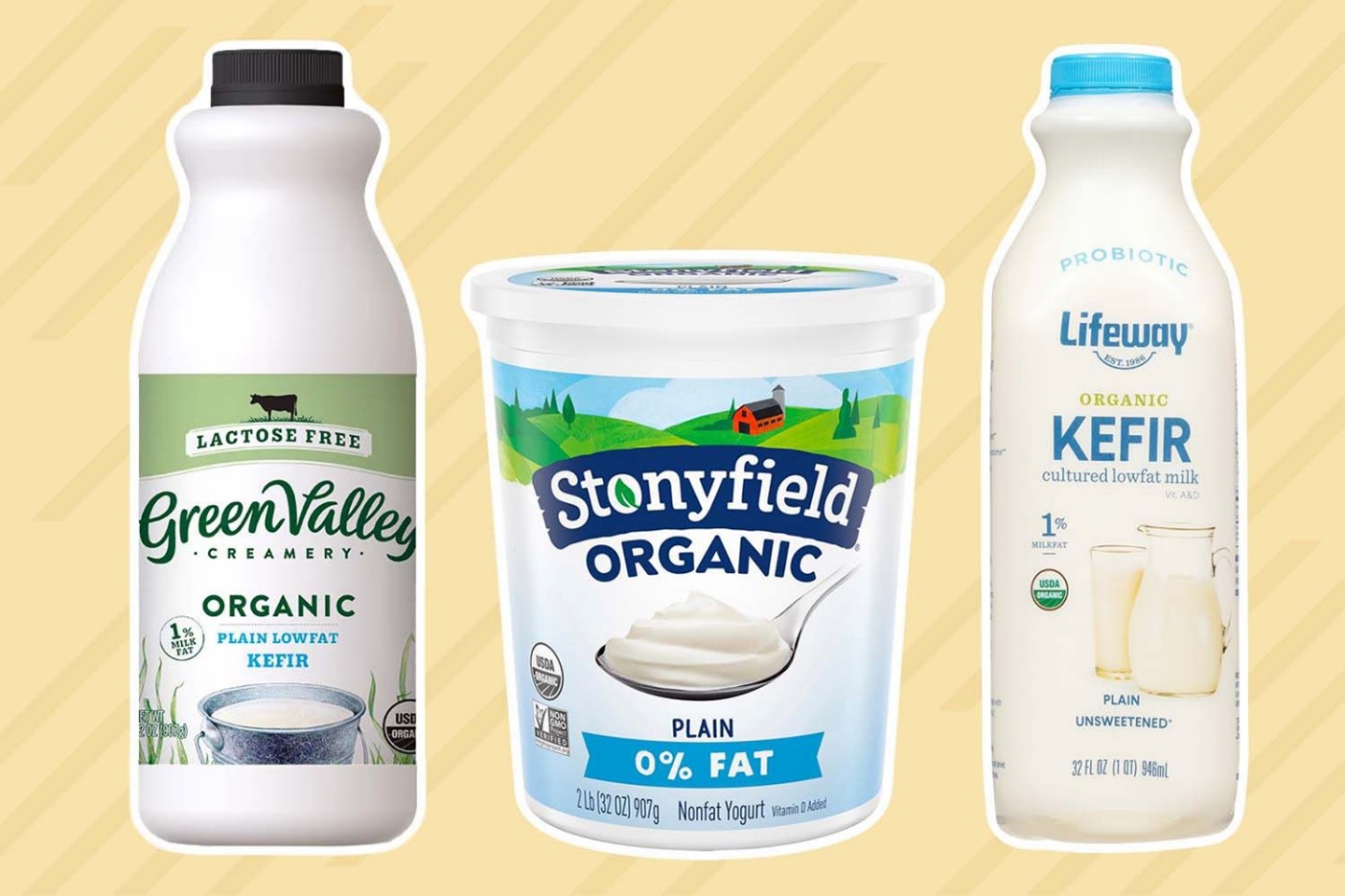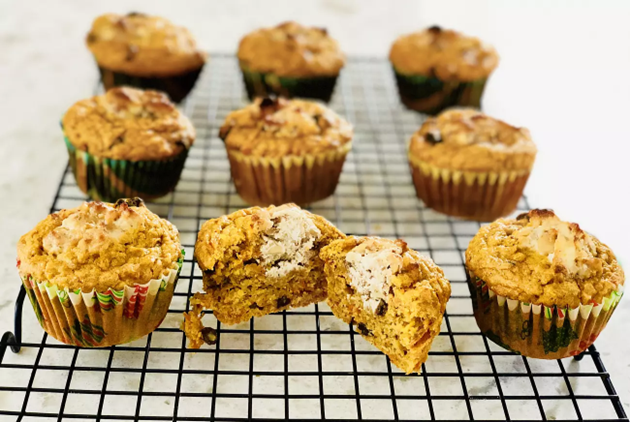SOUR Milk—How Is It Different than SOURED Milk?
The short answer: sour milk is milk with a tart taste, which the milk gets either because it is beginning to spoil or because it was soured intentionally through fermentation or acidification.
Because the terms "sour milk" and "soured milk" are often used interchangeably, things get confusing. Technically speaking, there is a difference between sour milk and soured milk — milk that is soured on purpose is "soured milk" whereas milk that turns sour on its own is "sour milk."

Right here is a good time to clarify something: Just because milk is past the sell-by date on the milk carton, doesn’t mean that it needs to be poured down the drain. If it has been properly refrigerated, it may be drinkable for up to a week after the date on the label.
The best way to determine if your milk is safe for use is to trust your nose and taste buds. If there’s no off-putting smell or taste, you can still use it—it’s safe. But that said, chances are it’s not something you want to pour over your cereal. Just use it for baking.
Spoiled milk is a different story, though. Milk that’s turned excessively sour, yellowish or lumpy, (for example, milk that was left for an extended period of time on the kitchen counter on a hot day), and is ultra stinky falls in the category of spoiled, not soured.

Along with the unpleasant taste and smell, spoiled milk can cause nausea, stomach cramps, and diarrhea. And while oven heat destroys most of the harmful bacteria in spoiled milk, it will most likely give your baked goods a nasty after-taste. Don’t risk it. If in doubt whether your milk is just a bit sour or full-blown spoiled, it is best to throw it out.
With that settled, let’s look at the 2 types of soured milk: soured milk made by fermentation and soured milk made by acidification.
Soured milk made by fermentation (such as buttermilk and kefir) is produced by adding lactic acid bacteria (typically lactobacillus) to pasteurized milk and incubated at 104 to 111 degrees F for several hours.

This process does two things: it increases the product’s shelf life because it slows down microbial growth, and it enhances the taste and the digestibility.
Fermented sour milk has a higher acidity (lower pH), a tangy taste, a thicker consistency than regular milk, and it contains less lactose. It’s interesting to note that a fermented milk’s taste depends on the typed of lactic acid used in its fermentation.
Variations of soured milk products are found all over the world. In the western hemisphere, cultured buttermilk and yogurt are the most widely known and available. But kefir and probiotic drinks are gaining traction.

For soured milk made by acidification, an acid is added to thicken it and give it a tangy taste. Since there’s no lactic acid bacteria, no fermentation, and no incubation involved, home bakers make this all the time. If a recipe calls for buttermilk, which you don’t have on hand, you make our own version with either vinegar or lemon juice, right?
I’ll close by circling back to my original point (above), regarding that milk that’s gone just a bit sour. Use it zippy quick in scones and biscuits, pancakes and waffles, and cakes and muffins. And speaking of muffins, here’s a DELICIOUS recipe (we’ve used it for so long that I can’t remember where I got it—apologies to whomever is the genius behind it.)

2 1/4 cups all-purpose flour
1/2 cup sugar divided
2 1/4 teaspoons baking soda
3 cups shredded carrots
2/3 cup seedless golden raisins (plumped in water and well-drained)
1/4 butter softened
1 cup sour milk (or buttermilk, if you have it)
2 large eggs
2 tablespoons orange juice concentrate
1 teaspoon vanilla extract
WALNUT CREAM
6 tablespoons cream cheese
2 tablespoons sour cream
1/2 cup chopped walnuts
Directions:
Add Recipe to Cook'n
Because the terms "sour milk" and "soured milk" are often used interchangeably, things get confusing. Technically speaking, there is a difference between sour milk and soured milk — milk that is soured on purpose is "soured milk" whereas milk that turns sour on its own is "sour milk."

Right here is a good time to clarify something: Just because milk is past the sell-by date on the milk carton, doesn’t mean that it needs to be poured down the drain. If it has been properly refrigerated, it may be drinkable for up to a week after the date on the label.
The best way to determine if your milk is safe for use is to trust your nose and taste buds. If there’s no off-putting smell or taste, you can still use it—it’s safe. But that said, chances are it’s not something you want to pour over your cereal. Just use it for baking.
Spoiled milk is a different story, though. Milk that’s turned excessively sour, yellowish or lumpy, (for example, milk that was left for an extended period of time on the kitchen counter on a hot day), and is ultra stinky falls in the category of spoiled, not soured.

Along with the unpleasant taste and smell, spoiled milk can cause nausea, stomach cramps, and diarrhea. And while oven heat destroys most of the harmful bacteria in spoiled milk, it will most likely give your baked goods a nasty after-taste. Don’t risk it. If in doubt whether your milk is just a bit sour or full-blown spoiled, it is best to throw it out.
With that settled, let’s look at the 2 types of soured milk: soured milk made by fermentation and soured milk made by acidification.
Soured milk made by fermentation (such as buttermilk and kefir) is produced by adding lactic acid bacteria (typically lactobacillus) to pasteurized milk and incubated at 104 to 111 degrees F for several hours.

This process does two things: it increases the product’s shelf life because it slows down microbial growth, and it enhances the taste and the digestibility.
Fermented sour milk has a higher acidity (lower pH), a tangy taste, a thicker consistency than regular milk, and it contains less lactose. It’s interesting to note that a fermented milk’s taste depends on the typed of lactic acid used in its fermentation.
Variations of soured milk products are found all over the world. In the western hemisphere, cultured buttermilk and yogurt are the most widely known and available. But kefir and probiotic drinks are gaining traction.

For soured milk made by acidification, an acid is added to thicken it and give it a tangy taste. Since there’s no lactic acid bacteria, no fermentation, and no incubation involved, home bakers make this all the time. If a recipe calls for buttermilk, which you don’t have on hand, you make our own version with either vinegar or lemon juice, right?
I’ll close by circling back to my original point (above), regarding that milk that’s gone just a bit sour. Use it zippy quick in scones and biscuits, pancakes and waffles, and cakes and muffins. And speaking of muffins, here’s a DELICIOUS recipe (we’ve used it for so long that I can’t remember where I got it—apologies to whomever is the genius behind it.)

Carrot and Walnut Cream Muffins
Ingredients:
2 1/4 cups all-purpose flour
1/2 cup sugar divided
2 1/4 teaspoons baking soda
3 cups shredded carrots
2/3 cup seedless golden raisins (plumped in water and well-drained)
1/4 butter softened
1 cup sour milk (or buttermilk, if you have it)
2 large eggs
2 tablespoons orange juice concentrate
1 teaspoon vanilla extract
WALNUT CREAM
6 tablespoons cream cheese
2 tablespoons sour cream
1/2 cup chopped walnuts
Directions:
1. Preheat oven to 350?. Line 12 muffin cups or butter it well; set aside.
2. Combine flour, ? cup of the sugar and baking soda; stir.
3. Add carrots and raisins, stir to coat.
4. Mix in butter; set aside.
5. Combine sour milk, eggs, orange juice concentrate and vanilla; stir into flour mixture.
6. Fill each cup about ? full.
WALNUT CREAM
1. Combine cream cheese, walnuts, sour cream and remaining sugar. Top each portion of batter with an equal amount of cheese mixture.
2. Bake in middle rack for 20 to 25 minutes, golden brown.
3. Remove from pan to rack and cool.
2. Combine flour, ? cup of the sugar and baking soda; stir.
3. Add carrots and raisins, stir to coat.
4. Mix in butter; set aside.
5. Combine sour milk, eggs, orange juice concentrate and vanilla; stir into flour mixture.
6. Fill each cup about ? full.
WALNUT CREAM
1. Combine cream cheese, walnuts, sour cream and remaining sugar. Top each portion of batter with an equal amount of cheese mixture.
2. Bake in middle rack for 20 to 25 minutes, golden brown.
3. Remove from pan to rack and cool.
Recipe formatted with the Cook'n Recipe Software from DVO Enterprises.
 Alice Osborne
Alice Osborne
Weekly Newsletter Contributor since 2006
Email the author! alice@dvo.com
